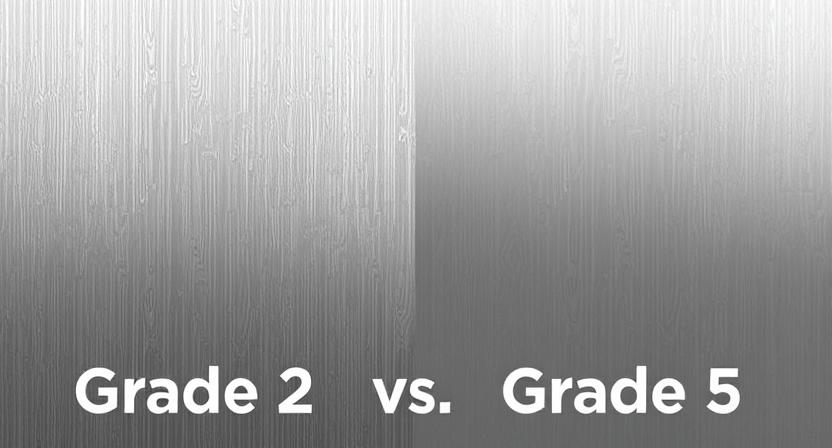If you are working with titanium, you will quickly encounter two of the most popular types: Titanium Grade 2 and Titanium Grade 5. While both are excellent materials, they have very different properties and are used for different jobs. Knowing the difference is key to the success and cost-effectiveness of your project.
The Quick Difference: Grade 2 Titanium is Commercially Pure (CP) and known for its excellent corrosion resistance and easy workability. Grade 5 Titanium (also called Ti-6Al-4V) is an alloy, famous for its much higher strength and light weight.
Grade 2 Titanium is one of the four grades of Commercially Pure (CP) titanium. It is often called the "workhorse" of the CP grades because it offers a great balance of strength, ductility, and corrosion resistance. It is essentially pure titanium, with very small amounts of other elements like oxygen and iron.
Type: Commercially Pure (CP)
Key Feature: Excellent formability and weldability.
Grade 5 Titanium is the most widely used titanium alloy in the world. Its special properties come from the addition of 6% Aluminum (Al) and 4% Vanadium (V). These elements significantly increase the material's strength, making it ideal for high-stress applications.
Type: Alpha-Beta Alloy (Ti-6Al-4V)
Key Feature: Exceptionally high strength-to-weight ratio.

The biggest difference between the two grades is their mechanical strength. Grade 5 is significantly stronger than Grade 2.
| Property | Titanium Grade 2 (CP) | Titanium Grade 5 (Ti-6Al-4V) |
|---|---|---|
| Material Type | Commercially Pure | Alpha-Beta Alloy |
| Minimum Tensile Strength | 345 MPa (50,000 psi) | 895 MPa (130,000 psi) |
| Strength Level | Moderate | Very High (Roughly 2.5x Stronger) |
| Ductility / Formability | Excellent (Easy to bend and shape) | Poor (Difficult to cold form) |
| Weldability | Excellent | Good (Requires more care and specific filler metal) |
| Corrosion Resistance | Excellent | Excellent |
| Cost | Lower | Higher (Due to alloying and processing) |
Because of their different properties, Grade 2 Titanium and Grade 5 Titanium are used in distinct industries and for different parts.
Grade 2 is chosen when high corrosion resistance and easy fabrication (bending, shaping, welding) are more important than extreme strength. It is cost-effective for large-scale industrial use.
Chemical Processing: Heat exchangers, condensers, and piping systems due to its superior resistance to oxidizing media.
Marine Industry: Components exposed to saltwater.
Architecture: Building facades and decorative elements.
Desalination Plants: Tubing and vessels.
Grade 5 is the material of choice for critical, high-performance parts where a high strength-to-weight ratio is essential. It is the workhorse of the aerospace and medical fields.
Aerospace: Aircraft engine components, airframe parts, and landing gear.
Medical Implants: Orthopedic implants (hip and knee replacements) and surgical tools.
Automotive: High-performance engine parts and racing components.
Sports Equipment: Bicycle frames and golf club heads.
The choice between Grade 2 vs Grade 5 titanium depends entirely on your project's needs:
Choose Grade 2 if: You need a material that is easy to form, weld, and offers excellent corrosion resistance, and high strength is not the primary requirement. It is the more economical choice.
Choose Grade 5 if: You need the highest possible strength and lightest weight for a critical, structural component, and the higher cost is justified by the performance gains.
In short, Grade 2 is for industrial reliability and easy manufacturing, while Grade 5 is for cutting-edge performance and strength.
If you are a manufacturer or buyer looking for high-quality titanium materials, our team can help you select the exact grade and form (sheet, bar, wire, etc.) that meets your specifications.